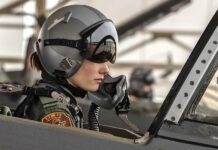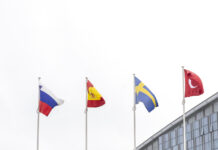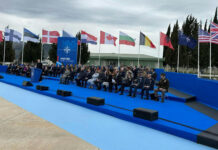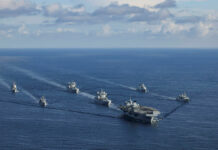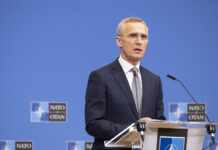The Multinational Multirole Tanker Transport Unit (MMU) is a key component of NATO’s air-to-air refuelling (AAR), strategic aeromedical evacuation (Strat AE), and air transportation capabilities. Now, 11 years after the concept was first agreed upon, it is beginning to provide its members with critical aerial capabilities.
On 23 March 2023, NATO’s Multinational Multirole Tanker Transport Unit (MMU) officially attained Initial Operational Capability (IOC). This means that the unit, equipped with Airbus A330 MRTT aircraft, is now capable of conducting limited air-to-air refuelling, transport and medical evacuation missions.

Credit: Mark Cazalet
Originally, the ceremony was to take place as early as January 2022. However, this date could not be met due to delays caused by the COVID pandemic. However, the fleet had already flown its first missions before this formality. For instance, the MMU was involved in the evacuation of military and civilian personnel from Afghanistan in 2021 and has been supporting NATO air policing missions on the Alliance’s eastern flank since 2022.
The mission of the Multinational Unit is to provide reliable and global air refuelling, material transport and medical evacuation. Currently, the fleet consists of seven A330 MRTTs, but this is set to increase, with delivery of two more aircraft planned for 2024. In addition, a tenth aircraft was reported to have been ordered in December last year, according to an article in the Journal of the Joint Air Power Competence Center (JAPCC).
The Path to MMU
A total of six nations are involved in the Multinational Multirole Tanker Transport Fleet (MFF) project, of which the MMU is the operational arm. In addition to the Netherlands, the lead nation of the project, Belgium, Norway, the Czech Republic, Luxembourg and Germany are also involved. The inclusion of further members is possible, but not currently planned.
The six participating nations jointly provide the personnel for the unit and share the costs according to their purchased flying hours. The MMU expects 1,100 flight hours per aircraft, per year. Currently, Germany has booked 5,500 flying hours, the Netherlands 2,000, Luxembourg 1,200, Belgium 1,000, the Czech Republic 100, and Norway 100. According to the JAPCC Journal article, Belgium wants to finance another MMU aircraft as part of its Armed Forces Strengthening Plan (STAR) and thus increase its flying hours account to over 2,000.
The origin of the MMF programme dates back to a 2012 initiative by the European Defence Agency to address the European air-to-air refuelling capability gap. In 2016, the MMF programme was officially launched with the signing of a Memorandum of Understanding (MoU) between the Netherlands and Luxembourg. Germany and Norway followed in mid-2017, Belgium in early 2018, and the Czech Republic in late 2019.
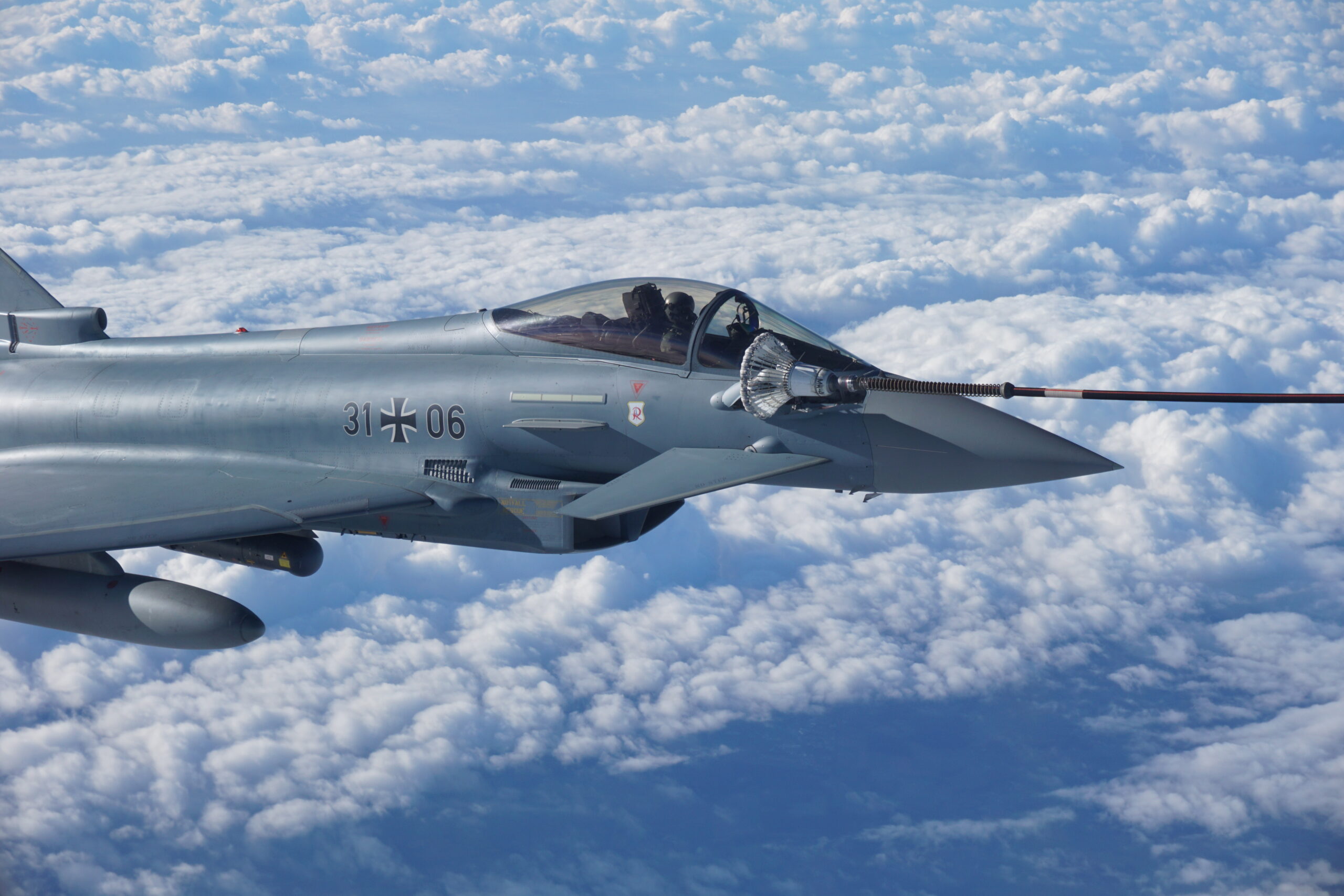
Credit: Mark Cazalet
The establishment of the Multinational Multirole Tanker Transport Unit (MMU) began in 2019, reaching its first major milestone with IOC attainment. In order to achieve Full Operational Capability (FOC) status, firstly, the required personnel numbers need to be trained, certified and made ready for deployment. Secondly, the necessary infrastructure and materiel to operate the unit must also be in place. According to a spokesperson for the MMU, FOC status is to be achieved with the delivery of the ninth machine, slated for the end of 2024. The MMU should then be in a position to comprehensively fulfil its mission.
The procurement of aircraft for the MMU is being conducted through OCCAR (Organisation for Joint Armament Co-operation), while the owner of the A330 MRTT fleet is NATO. For this reason, NSPA (NATO Support and Procurement Agency) is also responsible for management of the fleet. This structure has created a multinational pool of aircraft, which the participating countries can access according to their shares. In addition, there is also the possibility of selling flying hours of the fleet to other NATO and EU states, so that the circle of beneficiaries of this pooling and sharing can extend beyond the MMU states. The aim of this concept is to make expensive but strategically important capabilities such as air transport, air-to-air refuelling and medical evacuation as cost-effective and accessible as possible. In this way, smaller states such as Luxembourg or the Czech Republic have access to capabilities that they would otherwise hardly be able to finance.
According to the MMU, the following order of prioritisation exists to deal with possible situations where multiple members simultaneously request access to the fleet, going from highest to lowest:
1. Deployment in the event of a national emergency or crisis in direct support of the citizens of the requesting MMF member.
2. Deployment in the event of a perceived or actual armed conflict or crisis involving the MMF member.
3. Deployment in the context of national support to EU, NATO or UN missions.
4. Deployment in the framework of support to national humanitarian missions.
Aside from the bureaucratic challenges that arise in the context of multinational units, such as the need to align rules and procedures, there is also a certain loss of national autonomy associated with this concept. For example, what happens if an MMF member wants to transport goods to a country through the MMU, but all other members refuse this transport? According to a spokesperson for the MMU, such an operation would be possible, but would require that the MFF member transporting the goods to have sufficient staff of their own to carry out the flight independently. Accordingly, there is no obligation on the part of the other MFF members to provide personnel in such a case.
The MMU is stationed at the main operating base in Eindhoven (Netherlands) and at the forward operating base in Cologne (Germany). In future, five aircraft and 250 staff are to be stationed in Eindhoven, with four aircraft and 120 staff planned for Cologne. The planned basing location of the tenth aircraft is still unclear.
The MRTT Aircraft
The aircraft used by the MMU is the Airbus A330 MRTT, a heavily modified variant of Airbus’ twin-engine commercial model. In terms of dimensions, the aircraft is 58.8 m in length, with a wingspan of 60.3 m, and a height of 17.4 m. The aircraft is manned by 11 crew, comprising two pilots, an air-to-air refuelling operator or loadmaster (depending on the mission), and eight cabin crew. The baseline configuration is capable of transporting a total of 267 passengers, or a total of 45 tonnes of payload, with a lower deck volume of 120 m3 for cargo. However, there is also a MEDEVAC configuration, which replaces some of the seats of the baseline variant with medical equipment, including with six intensive care units, 21 medical seats, and 16 stretchers.

Credit: Mark Cazalet
The aircraft is powered by two Rolls-Royce Trent 772B turbofan engines, providing 320 kN (72,000 lb) of thrust each, providing a cruising speed of 224 m/s (Mach 0.71), and a top speed of 253.6 m/s (Mach 0.73). The aircraft has a maximum range of 8,334 km (4,500 NM), and a service ceiling of 12.5 km (41,000 ft). In terms of defensive systems, the aircraft is equipped with a Directional Infra-Red Countermeasure (DIRCM) system to provide protection against missiles equipped with infra-red seekers. In terms of refuelling capabilities, the aircraft can be equipped with either tail-mounted boom or wing-mounted probe and drogue refuelling systems, depending on the aircraft it needs to refuel. The refuelling system is controlled from the on-board air refuelling console, and is capable of delivering fuel at a flow rate of 1,800 kg/minute, which equates to approximately 2,200 litres/minute.
During ESD’s visit to the MMU FOB at Cologne on 06 February 2023, ESD staff were given the opportunity to ride along on one of the MEDEVAC configuration aircraft while it performed an AAR mission at an ‘air refuelling anchor’ over Germany. During the flight, the aircraft demonstrated its capabilities by refuelling nine Eurofighter Typhoon aircraft of the German Air Force which had arrived from various different airbases.
For the flight, the aircraft was equipped with a drogue refuelling system, and flight staff on board the aircraft told ESD that while equipped with two drogue refuelling pods, double refuelling was technically possible, but for safety reasons, they don’t rend to refuel two aircraft simultaneously. Instead, the system used is to allow an aircraft on one side of the aircraft to refuel, while a second waits in on the other side. Once the first aircraft is finished refuelling and pulls away, the second aircraft on the other side moves in, while a third aircraft moves in to wait its turn on the other side, and so on.

Credit: Mark Cazalet
Training of MMU crews is presently being carried out in Seville, Spain. MMU staff told ESD that mixed crews have flown missions, but more typically the mixed crew flights have tended to operate out of Eindhoven, while operations out of Cologne more typically use German crews.
With the MMU having attained IOC and due to attain FOC in 2024, alliance members of the MMU can look forward to having attained a critically-important set of interoperable aerial capabilities, which will provide wide-ranging benefits to the alliance as a whole.
Ole Henckel and Mark Cazalet





